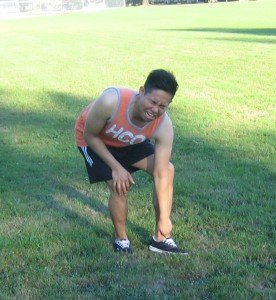There are two main forms of injures – acute and overuse injuries. When it comes to acute injuries, they are usually the result of a traumatic event such as shoulder dislocations, wrist fractures, ankle sprains and hamstring strains.
As for overuse injuries, they are common in various types of sports and usually subtle and develop over time which makes them difficult to diagnose and manage. This form of injury is due to the constant micro-trauma on the bones, joints and tendons.
Why do overuse injuries occur?
The body is capable of adapting to physical stress such as activity and exercise. Engaging in activity is considered beneficial for the muscles, bones, tendons and ligaments so that they become stronger and functional. This occurs due to an internal process known as remodeling.
The remodeling process usually involves both the breaking down and the buildup or development of tissue. Remember that this is a fine distinction between the two processes and once breakdown occurs quickly than buildup, this results to the development of overuse injuries.
Factors responsible for overuse injuries

Errors during training in certain sports are the usual reason of overuse injuries. These mistakes typically involve fast rushing of the duration, intensity or regularity of activity. Overuse injuries also occur among individuals who return to a particular sport or activity after sustaining injury and try to round up the time they lost by pushing themselves to previous levels before the injury was sustained. Correct technique is vital in order to avoid overuse injuries since minor changes might be the culprit.
Some are more susceptible than others to the development of overuse injuries. The imbalances to the flexibility and strength on certain joints can put an individual at risk for injury. Body alignment issues can also contribute to overuse injuries. Many individuals also have weakened links due to previous injuries, anatomic factors and partially rehabilitated injuries.
Treatment for overuse injuries
- Reducing the intensity, duration and frequency of an activity especially in certain sports.
- Sticking with a properly balanced workout schedule and cross-training with other activities to maintain the fitness level
- Observe proper training and technique at all times
- Always perform proper warm-up activities before and after
- Application of ice after an activity in case of minor pain
- Anti-inflammatory medications to relieve the pain
In case the symptoms persist or become worse, a doctor can provide a detailed treatment plan for the specific condition of the individual. This might include a comprehensive review of the training program and assessment for any predisposing factors. In addition, physical therapy is also beneficial by consulting a physical therapist so that the suitable rehabilitation routine can be started.
